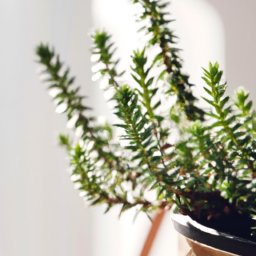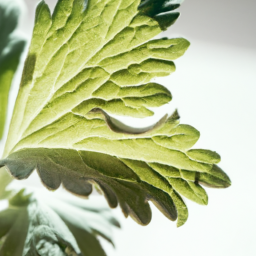
Are you looking to add some greenery to your home or office space? Direct light plants may be the perfect solution for you! These plants thrive in bright, direct sunlight and can add a touch of nature to any room. Whether you’re a seasoned plant parent or just starting out, direct light plants are a great option for bringing some life into your space. In this blog post, we’ll explore some of the best direct light plants to consider adding to your collection. So grab your watering can and let’s dive in!
Benefits of Direct Light for Plants
Hello plant lovers! Today, we are going to talk about the benefits of direct light for plants. As an expert in direct light plants, I can assure you that providing your plants with the right amount of direct sunlight can make a world of difference in their growth and overall health. Let’s dive into the wonderful world of direct light plants!
Increased Photosynthesis
One of the key benefits of direct light for plants is increased photosynthesis. Photosynthesis is the process by which plants convert sunlight into energy, allowing them to grow and thrive. When plants receive direct sunlight, they are able to absorb more light energy, which in turn leads to higher rates of photosynthesis. This means that plants can produce more glucose, their main source of energy, and grow more vigorously.
Direct sunlight also helps plants produce more chlorophyll, the green pigment responsible for capturing sunlight and converting it into energy. With more chlorophyll, plants are better equipped to absorb and utilize sunlight, leading to healthier and more vibrant growth. So, if you want your plants to flourish, make sure they are getting enough direct light!
In addition to promoting photosynthesis, direct light also plays a crucial role in the production of vitamins and antioxidants in plants. These compounds help plants defend against environmental stressors, such as pests and diseases, and contribute to their overall health and resilience. So, by providing your plants with ample direct sunlight, you are not only boosting their growth, but also enhancing their natural defenses.
Enhanced Nutrient Absorption
Another benefit of direct light for plants is enhanced nutrient absorption. Sunlight is not only a source of energy for plants, but also a key factor in nutrient uptake. When plants receive direct sunlight, they are able to absorb essential nutrients, such as nitrogen, phosphorus, and potassium, more efficiently. This allows them to grow stronger roots, develop healthier foliage, and produce more flowers and fruits.
Direct sunlight also helps plants regulate their water balance by promoting transpiration, the process by which plants release water vapor through their leaves. This helps prevent waterlogging and ensures that plants have access to an adequate water supply. In addition, sunlight stimulates the production of sugars in plants, which serve as energy reserves and help them withstand periods of drought or other environmental challenges.
By providing your plants with direct light, you are not only fueling their growth, but also optimizing their nutrient uptake and water management. This can lead to healthier, more resilient plants that are better equipped to thrive in their environment.
Improved Flowering and Fruit Production
One of the most rewarding benefits of direct light for plants is improved flowering and fruit production. Sunlight plays a crucial role in the development of flowers and fruits, as it provides the energy needed for these processes to occur. When plants receive adequate direct sunlight, they are more likely to produce abundant blooms and bountiful harvests.
Direct sunlight also influences the timing and quality of flowering and fruiting in plants. By providing consistent exposure to sunlight, you can help regulate the plant’s internal clock and ensure that it blooms and fruits at the right time. This can result in more synchronized flowering, longer blooming periods, and higher fruit yields.
In addition, direct sunlight can enhance the color, flavor, and nutritional value of fruits and flowers. Sunlight triggers the production of pigments and compounds that contribute to the visual appeal and taste of fruits, as well as their nutrient content. So, if you want to enjoy beautiful blooms and delicious fruits from your plants, be sure to give them plenty of direct sunlight!

Best Plants for Direct Sunlight
Choosing the Right Plants
When it comes to choosing plants that thrive in direct sunlight, it’s important to consider the specific needs of each plant. Some plants are more tolerant of intense sunlight, while others may require some shade during the hottest part of the day. Before selecting plants for your garden or outdoor space, be sure to research the specific sunlight requirements of each plant to ensure they will thrive in their new environment.
Some popular plants that do well in direct sunlight include succulents, cacti, and certain flowering plants like sunflowers and marigolds. These plants are adapted to thrive in hot, sunny conditions and can add a pop of color and texture to your outdoor space.
It’s also important to consider the climate and weather conditions in your area when selecting plants for direct sunlight. Some plants may require more water or protection from extreme heat, so be sure to choose plants that are well-suited to your specific location.
Caring for Direct Sunlight Plants
Once you’ve selected the right plants for direct sunlight, it’s important to provide them with the proper care to ensure they thrive. One of the most important factors to consider is watering. Plants in direct sunlight may require more frequent watering, especially during hot, dry weather. Be sure to monitor the soil moisture and adjust your watering schedule as needed.
In addition to watering, it’s important to provide plants with the proper nutrients to support their growth. Consider using a slow-release fertilizer or organic compost to help plants thrive in direct sunlight. Regular pruning and deadheading can also help promote healthy growth and flowering.
Finally, be sure to monitor your plants for signs of stress or damage from the sun. If you notice wilting, yellowing leaves, or sunburned spots, take action to protect your plants from the intense sunlight. Consider providing some shade during the hottest part of the day or moving plants to a slightly shadier location if needed.
Tips for Success
When growing plants in direct sunlight, it’s important to provide them with the proper care and attention to ensure they thrive. Here are a few tips for success:
1. Choose plants that are well-suited to your specific sunlight conditions and climate.
2. Monitor soil moisture and adjust your watering schedule as needed, especially during hot, dry weather.
3. Provide plants with the proper nutrients through fertilization and composting.
4. Monitor plants for signs of stress or damage from the sun and take action to protect them as needed.
By following these tips and providing your plants with the proper care, you can enjoy a beautiful garden or outdoor space filled with plants that thrive in direct sunlight.

How to Properly Care for Direct Light Plants
Understanding Direct Light Plants
Direct light plants are those that thrive in bright, direct sunlight. These plants are typically native to regions with high levels of sunlight and have adapted to thrive in these conditions. Some common examples of direct light plants include succulents, cacti, and certain types of tropical plants.
When caring for direct light plants, it’s important to understand their specific needs. These plants require ample sunlight to photosynthesize and grow properly. However, too much direct sunlight can also be harmful, causing the leaves to burn or the plant to wilt. Finding the right balance of light is key to keeping your direct light plants healthy and thriving.
In addition to sunlight, direct light plants also require well-draining soil and proper watering. These plants are often drought-tolerant and do not like to sit in waterlogged soil. It’s important to water them sparingly, allowing the soil to dry out between waterings. Overwatering can lead to root rot and other issues, so it’s best to err on the side of underwatering when caring for direct light plants.
Proper air circulation is also important for direct light plants, as stagnant air can lead to pests and diseases. Make sure to place your plants in a well-ventilated area with good air flow. Regularly dusting the leaves and inspecting for pests can help keep your direct light plants healthy and pest-free.
Caring for Direct Light Plants
When caring for direct light plants, it’s important to provide them with the right conditions to thrive. Here are some tips for properly caring for your direct light plants:
1. Sunlight: Direct light plants require at least 6 hours of sunlight per day to thrive. Place them in a sunny window or outdoors in a location with ample sunlight. If you notice the leaves starting to burn or wilt, move the plant to a slightly shadier spot.
2. Watering: Water your direct light plants sparingly, allowing the soil to dry out between waterings. Stick your finger into the soil to check for moisture before watering. If the soil feels dry to the touch, it’s time to water. Avoid overwatering, as this can lead to root rot.
3. Soil: Use a well-draining soil mix for your direct light plants, such as a cactus or succulent mix. This will help prevent waterlogged soil and promote healthy root growth. Repot your plants every 1-2 years to refresh the soil and provide room for growth.
4. Fertilizing: Direct light plants do not require frequent fertilizing, as they are adapted to nutrient-poor soils. Use a balanced fertilizer diluted to half strength every 4-6 weeks during the growing season. Avoid fertilizing in the winter months when plants are dormant.
5. Pruning: Regularly prune your direct light plants to promote healthy growth and shape. Remove dead or yellowing leaves, as well as any leggy growth. Pruning can also help prevent pests and diseases by improving air circulation.
6. Pests and diseases: Keep an eye out for common pests such as spider mites, mealybugs, and aphids. If you notice any signs of pests or diseases, isolate the affected plant and treat it immediately. Use organic pest control methods whenever possible to minimize harm to your plants.
Troubleshooting Common Issues
Even with proper care, direct light plants can still encounter issues. Here are some common problems and how to troubleshoot them:
1. Leaf burn: If you notice the leaves of your direct light plant starting to burn or turn brown, it may be getting too much direct sunlight. Move the plant to a slightly shadier spot and gradually increase the amount of sunlight it receives.
2. Yellowing leaves: Yellowing leaves can be a sign of overwatering or nutrient deficiencies. Check the soil moisture and adjust your watering schedule accordingly. If the issue persists, consider fertilizing your plant with a balanced fertilizer.
3. Leggy growth: Leggy growth can occur when a plant is not getting enough sunlight or is reaching for light. Prune back leggy growth to encourage bushier growth and place the plant in a sunnier location.
By following these tips and troubleshooting common issues, you can ensure that your direct light plants thrive and remain healthy. With proper care and attention, your plants will reward you with vibrant growth and beauty for years to come.
Key Takeaways of this article
Direct light plants are a popular choice for many indoor gardeners due to their ability to thrive in bright, direct sunlight. These plants typically have thick, waxy leaves that can handle the intensity of direct light without burning or drying out. Some common examples of direct light plants include succulents, cacti, and certain types of tropical plants.
When caring for direct light plants, it’s important to place them in a location where they will receive at least 6-8 hours of direct sunlight each day. This can be achieved by placing them near a south-facing window or using grow lights to supplement natural sunlight. Additionally, it’s crucial to water these plants regularly, as the intense light can cause them to dry out more quickly. With proper care and attention, direct light plants can bring a touch of nature and beauty into any indoor space.
Frequently Asked Questions (FAQ):
Q1. What are direct light plants?
Direct light plants are types of plants that thrive in bright, direct sunlight. These plants typically require at least 6 hours of direct sunlight each day to grow and flourish.
Q2. What are some examples of direct light plants?
Some examples of direct light plants include succulents, cacti, aloe vera, and certain types of herbs like basil and rosemary. These plants are well-suited for sunny windowsills or outdoor garden areas.
Q3. How should I care for direct light plants?
To care for direct light plants, make sure to water them regularly, but allow the soil to dry out between waterings. Additionally, be sure to provide adequate drainage for the plants and consider fertilizing them occasionally during the growing season.
Q4. Can direct light plants be grown indoors?
Yes, many direct light plants can be grown indoors as long as they receive sufficient sunlight. Placing them near a south-facing window or using grow lights can help replicate the conditions of direct sunlight.
Q5. What are the benefits of having direct light plants in my home?
Having direct light plants in your home can help improve air quality, boost your mood, and add a touch of natural beauty to your living space. These plants are also relatively low-maintenance and can be a great way to bring a bit of the outdoors inside.

James Wong is a renowned ethnobotanist, plant scientist, and local television presenter. With a passion for demystifying plant science, he is known for translating complex botanical concepts into practical advice for everyday plant enthusiasts. James’s expertise spans from traditional gardening to cutting-edge plant technologies, making his insights accessible and informative.


